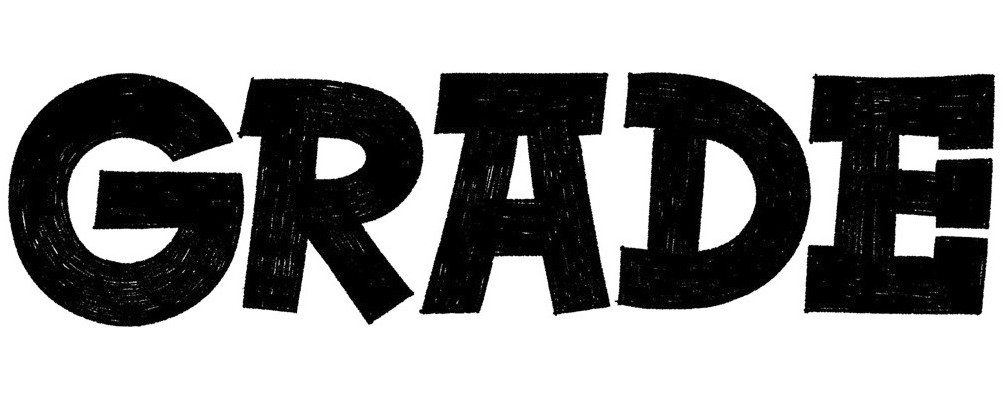"...I miss the "old days" in Moscow when we could go wild wherever we wanted...", - Swedish artist Finsta recalls the capital with the same feeling of warm nostalgia and melancholy for the golden years of graffiti. He often visits Moscow, which only increased our interest in his person. For example, on his last visit, the artist showed himself in a new role making tattoos in "Love Life Tattoo" studio.
The search for new is an important personality trait of Finsta. In the nineties he began to draw graffiti influenced by "Spraykonst" and hip-hop culture; this allowed him to open uncharted horizons in his work: numerous opportunities for illustration, creating complex murals and simple tattoos.
In 2009, a book published about what was "then" Finsta art. So we decided to find out what is happening in his life "now" and reflect on the essentials.
The search for new is an important personality trait of Finsta. In the nineties he began to draw graffiti influenced by "Spraykonst" and hip-hop culture; this allowed him to open uncharted horizons in his work: numerous opportunities for illustration, creating complex murals and simple tattoos.
In 2009, a book published about what was "then" Finsta art. So we decided to find out what is happening in his life "now" and reflect on the essentials.
MOSCOW
In December you visited Moscow again. Tell us about your impressions of the trip. What do you remember on this visit? And what has changed since your previous Moscow trip?
I have come to Moscow many times. First time was when I was a kid in 1990. Of course the city has changed a lot since Soviet times, but even now when I come every two years or so, I see big changes. The city is becoming cleaner and stricter when it comes to graffiti and dirt, but I also see a change in peoples faces. 5-10 years ago I would see a lot more grey faces and zero smiles. The city is becoming more western, and very high standard. Its both nice and sad to see. I hope the city will keep its own style. I love the people I meet and the art and design I see.
You did tattoos in Love Life Tattoo sudio. Tell us about your impression from working there. What do you think about Moscow tattoo scene?
I am new in tattooing, but there is a lot of similarities to graffiti and the graff scene. People I meet in tattoo shops around the world generally travel a lot and are used to meeting people of different nationalities. I instantly felt welcome meeting the guys for the first time through mutual friends. It was nice to meet some Russian clients and talk about their life, and how they got familiar with my work. All in all it was a good experience.

In your previous Moscow trips you participated in the Artmossphere with the local Moscow artists who also has the graffiti background. In that time you said that you see that Russian young graffiti writers want to do more and get knowledge. So, based on your December trip, what you can say about current Moscow graffiti scene? What things you memorized the most?
I see a obvious decrease In graffiti on my last trip. At least my graff friends from over there were less motivated than before. Police crack down harder on north face wearing backpack carrying guys and girls, so it takes out a bit of the fun. Writing for more than 25 years and traveling a lot, I have seen cities go up and down and up again, depending on security, government and how dedicated the writers are. Same goes for my hometown Stockholm. It's a natural organic flow, but I miss the "old days" in Moscow when we could go wild wherever we wanted.

GRAFFITI
There is in internet we can find many information about your bio and way as artist, but we almost have no information about your roots. Could you tell us: what was on your mind when you saw graffiti for the first time?
My first real memory with graffiti was when my friend Felix came home with a book from the library. "Spraykonst" a book about graffiti from south Sweden. I had been drawing my whole life, but seeing this I instantly understood that there was a cooler way to draw. Drawing in a funky style in big size, using spray cans. From that day I decided that this is what I wanted to do.
What was Stockholm graffiti in those years (when you just start to interesting it)? Who was local fame and legends? What was rules in the game? Could you give us short documentary of that time?
I grew up in Lund in the south of Sweden. For a long time I only got influenced by local writers, mainly through a book, but also seeing it in some tunnels. Reading this book and slowly meeting other writers I got educated about hip hop and abut the different elements. In the early 90ies it was very important to stay true, and do it in "the right way". Find your own style, don't bite, know about the different elements of hip hop. Listen to only east coast rap, wear M65 army jackets etc. It was a fun time, very narrow minded. Local heroes where Ruze, Core & Pike from the NSA crew.

You said that you almost do not interested in "classic" graffiti lettering in 1990s. Because you focused on "another things". What thing you focused on in 1990s? And why?
I came from drawing, so when I found graff I naturally got more into characters. Its more in the last 10 years that I've started to bring in more lettering as well. Making characters was more popular in those days, and coming from a small town with not much graff it was a way to do something that people could relate to. I've always liked to communicate and paint stuff that people can kind of understand. Although I can also very much appreciate to do things that only a few understands the purpose of.

There is in Moscow we know guy who draw bears all over the city. But many guys with "classic" view on graffiti (who also spray) often wrote him: "Come on boy, you draw bullshit, it's not a graffiti". So, have you came across anything like this in 1990s? How 1990s Stockholm graffiti community related to the fact that you are not drawing fonts, but something else?
I have never been a writer who always only paints one thing, but I had different periods where I focus on something really hard for a few months or years. I had a period painting pigs, another one painting cheeses, I had a red period, where I only wore red clothes, and a blue period where all my paintings where in a blue scale. I am too curious to only do one thing my whole life, but I like to dig deep when I find something that I like. Painting characters was always less valued in the graff scene, because it is not 100% graffiti, but when it comes to transforming into a illustration or art career, I find it easier and smoother coming from this background.
TATTOOS
We really have no information about it: you have the big experience in graffiti and graphics, but what motivated you to start tattooing?
I have been drawing my whole life, and I have always liked to try new techniques. Making sculptures, animations or murals. Tattooing is another way to draw, and one day I just decided that I wanted to get into it. The tattoo industry for a long time has been quite hard to get into if you don't have tattoo friends, or are heavily tattoos yourself, but nowadays the tools and information is more accessible. It is a craft that I take seriously, because it is medical in a way, and it is hard to buff, but I have been lucky to meet people along the way they has been guiding me.
How did you study tattooing? What was your first impressions while you working with tattoo machine on skin?
I first met a Danish graffiti writer who is also a tattoo guy and he asked me to tattoo him. I had never tried a machine, but he guided me through the process. After that, I got myself all the equipment and started practicing myself on fruit. Bananas, oranges and grapefruits. Friends heard about me practicing, and it didn't take long before people from left and right started to offer me their skin to practice on.

What means tattoo and tattooing for you?
Tattoos can mean a lot of different things depending on who is getting it and why. A lot of my clients have been into my art for a long time, and getting a tattoo is a way for them to buy a piece of art. They come from a generation that is not used to buying paintings, but they collect art in other ways.
In your opinion, what is more in it: limitations or opportunities?
Every craft has its limitations, but within those frames, you have the opportunity to be creative and try to create something new. In tattooing, I am just getting started. To be innovative takes time.

Your works on skin are slightly different from your graphics and artworks. Tell us about your main rules and view in tattooing work.
I do simple artwork for tattoos, because that is where my technical level is at.Plus simple is always nice. I work only in black ink, which suits my style well. Even before I started tattooing, people asked me all the time to draw tattoos for them.
What tattoo you will never not to do? And vise-versa: what type of work you really dream to do?
I don't think I will ever do photo realistic baby portraits. I'm into doing my own style only. When I get more experience, I would love to start doing backpieces, and larger work.
ART & STYLE
Not so long ago you did few artworks as "Finsta Tattoos Stockholm" for Fuzi's "Ignorant Comix" issue. These works marked as tattoo flashes but it also could be translated as wall art or graphics. Usually your style is extremely accurate, full of details and focus on small things...
Tell us: why you choose to make something in Ignorant Style?And what means Ignorant Style for you? What opportunities did this way gave you as an artist?
Tell us: why you choose to make something in Ignorant Style?And what means Ignorant Style for you? What opportunities did this way gave you as an artist?
I don't think I have an ignorant style, but I always liked simple powerful graphics with an hard attitude. I like ignorant rap music. I like when artists do what they want rather that what they think the public will like, it could be sweet or hard as long as it feels real. I prefer toy graffiti before technical masters, because it has more heart, and is more pure when you don't know all the rules.

We don't really want to be strictly categorical, but if we take a look on hyped "banana", changes the way of music, fashion, art and some more, we can said that world and art has turned to the really strange way. What do you think about this? Did we really live in mad time for art? How you describe this era?
Modern art has always been "strange" to people. I can imagine even Mona Lisa could seem strange or shocking to some people of that time. As an artist, I try to create something new. New things sometimes make people confused or uncomfortable. At the same time, I am an artist that like to communicate. I am not so much a rebel type artist, but try to be more understandable, friendly and innovative.
Based on all things you do now, illustration, graffiti, tattoos, graphics, what do you think: what can happen with all of these things in near future that will destroy its usual understanding (for viewer)?
I have always been doing many different techniques or working in many fields, all related to drawing. I am guided by inspiration. When I come up with an idea, I try to make it into reality. At the moment I am working a lot with surface patterns, and see what I can do with them. Trying to create something personal and new, while I put them on different products and projects. I am always curious to make my world of expressions bigger, to try new ideas and techniques and try to make them mine. Thanks to people I collaborate with or work for I am able to make this happen, and I have no intentions on slowing down.

Grade Moscow
25 Mar, 2020

